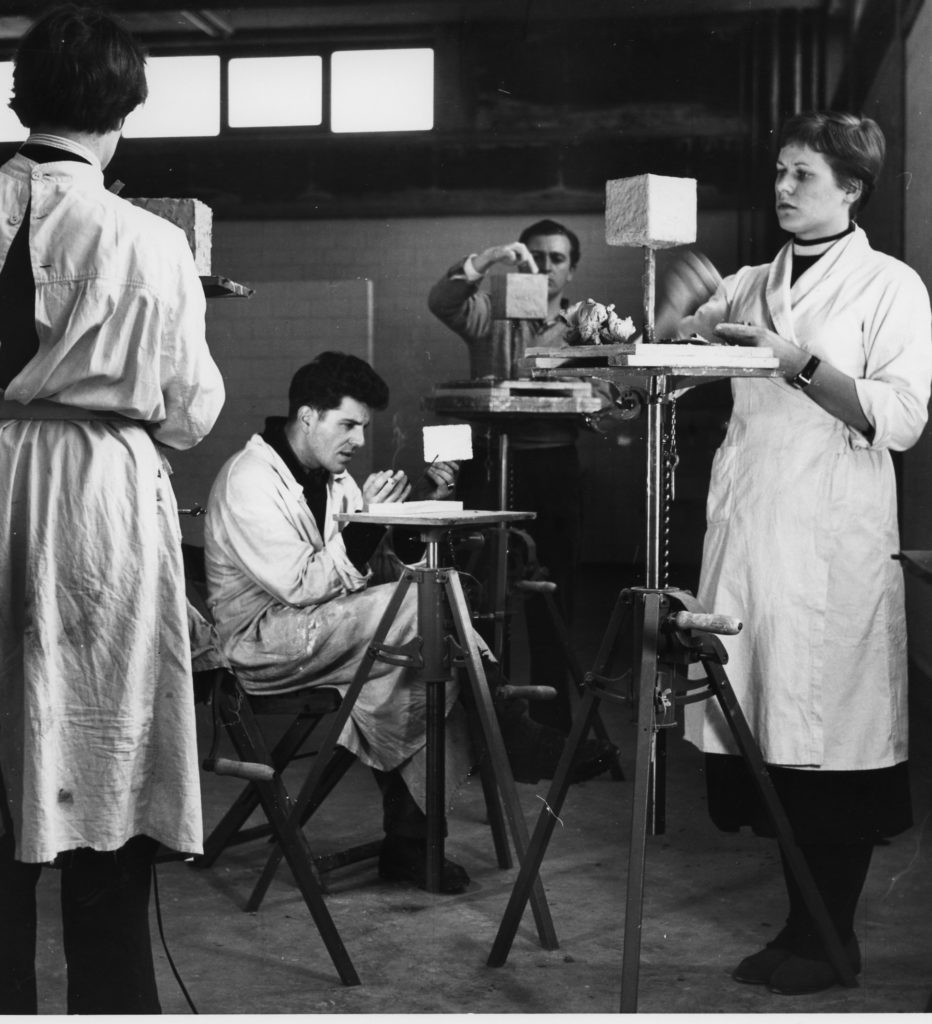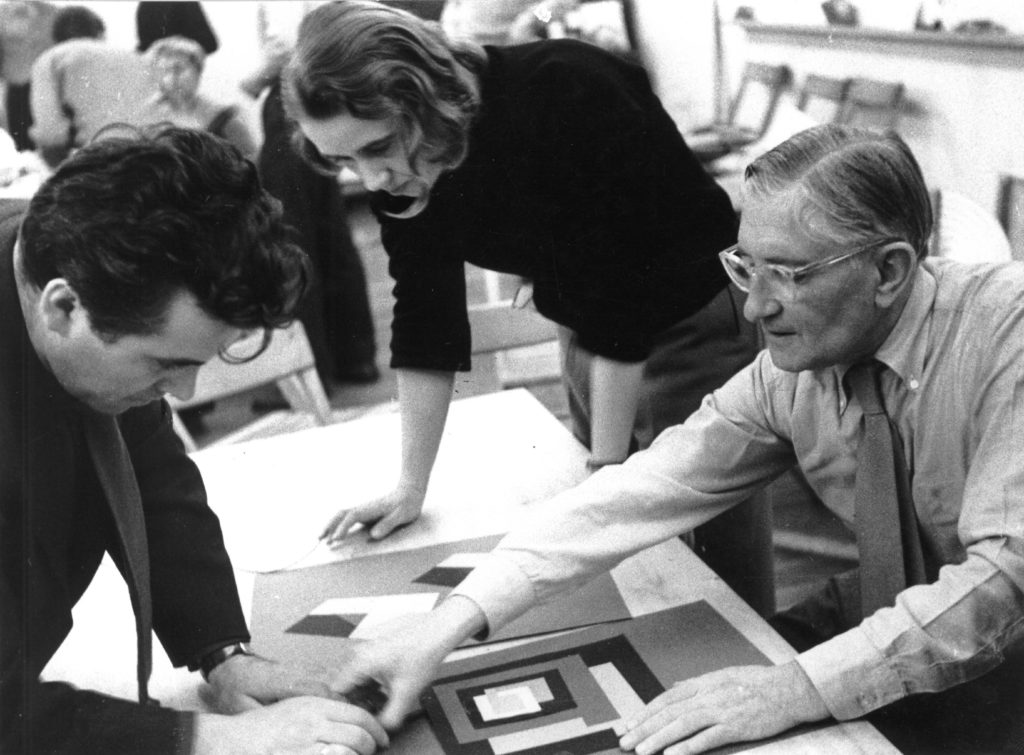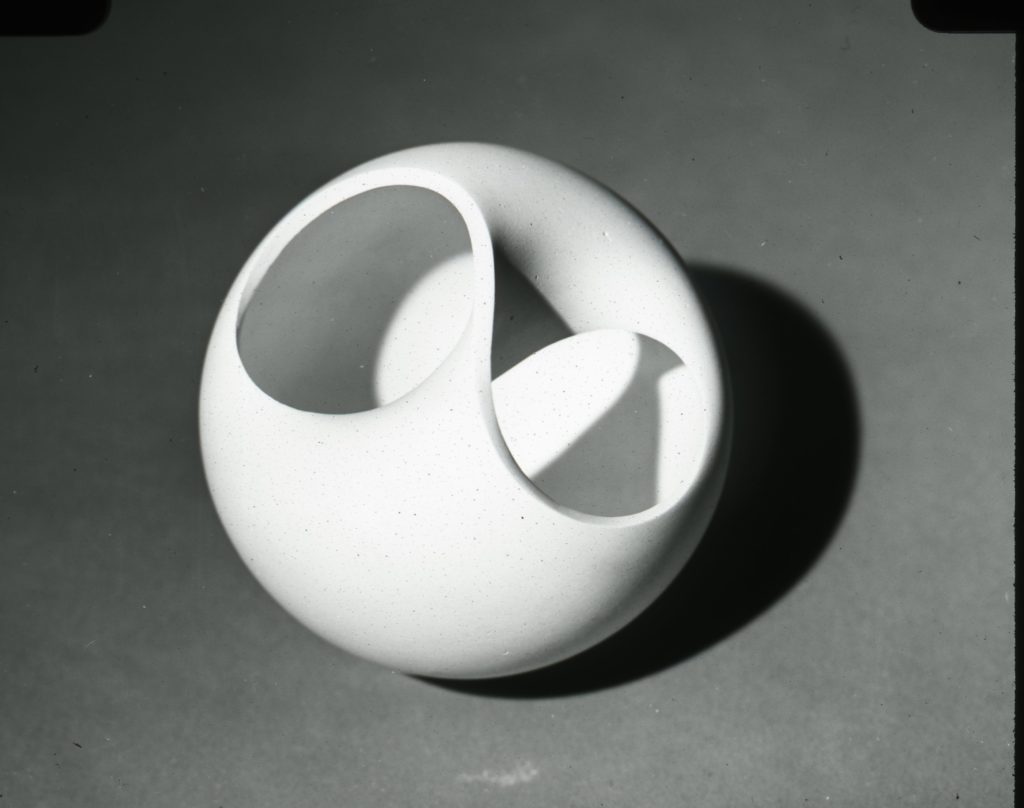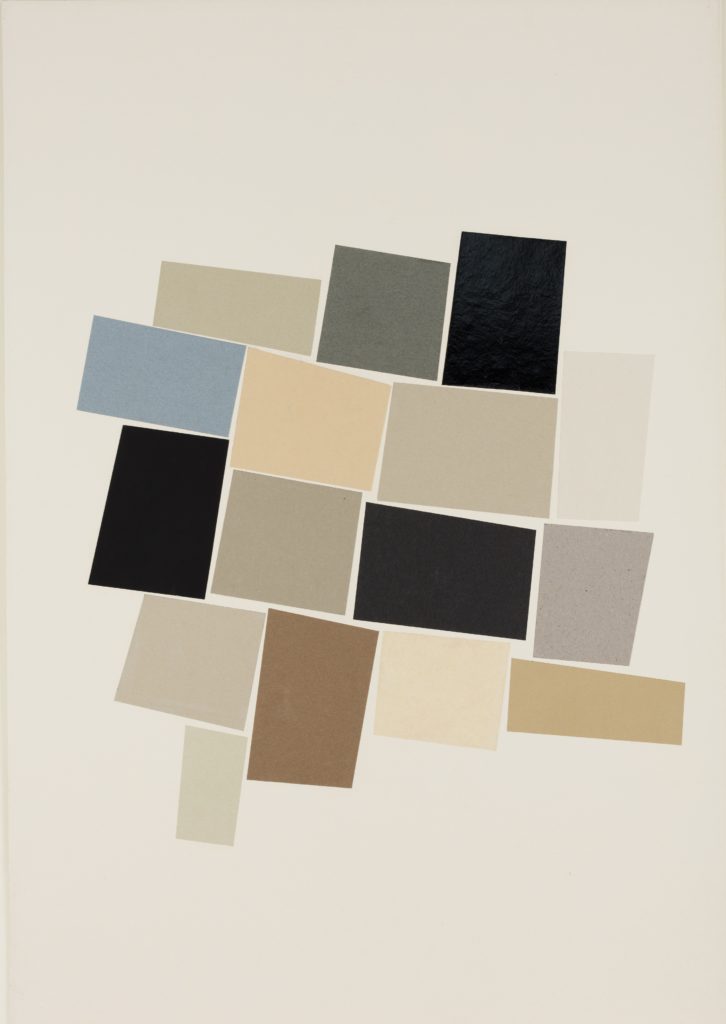The Hochschule für Gestaltung (HfG, Ulm School of Design) was active from 1953 to 1968. It is thanks to its co-founder, Max Bill, that Otl Aicher and Inge Scholl’s original idea to establish a university in memory of the Scholl sisters and brothers, members of the White Rose resistance group who were murdered by the NS regime, was adapted in favour of a school of design aligned with the Bauhaus Dessau.
From there, the Ulm school adopted both the preliminary course (renamed the basic course) and the workshops led by masters of craft. Max Bill had studied at the Bauhaus in Dessau in 1927/28. Thanks to his extensive links with former Bauhauslers, it was possible to attract Walter Peterhans, Josef Albers, Helene Nonné-Schmidt and Johannes Itten to Ulm as guest lecturers. Other Bauhauslers appeared as speakers: Walter Gropius spoke at the inauguration of the school building designed by Max Bill in October 1955. Max Bill had received permission from Walter Gropius to use the Bauhaus’s epithet in connection with the Ulm project.
Max Bill stood down as director in 1956 and left the school entirely in 1957 due to ‘insurmountable differences’ as regards the education concept. Tomás Maldonado, who Bill had brought to the HfG to teach the basic course, was chiefly responsible for realigning that course, which was obligatory for all, and abandoning the orientation towards the Bauhaus. As early as 1955, Maldonado called his course, which was not intuitive and explorative but systematic and methodical, ‘Visual Methodology’. The further development of the curriculum led to a scientification of the teaching on offer, the aim being to establish design as a scientific discipline.
From this time on, the timetable included subjects such as semiotics, mathematical operations analysis and other such topics. These changes ultimately culminated in the ‘Ulm model’, which regarded design as a process integrating all contributors from the initial concept to production. Maldonado himself spoke of the designer having to become a coordinator. This development was adapted again from 1961, when the university administration transferred the hitherto general basic course for all students to the individual departments.









